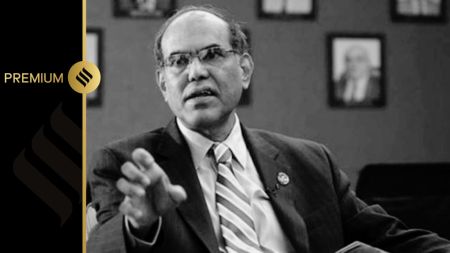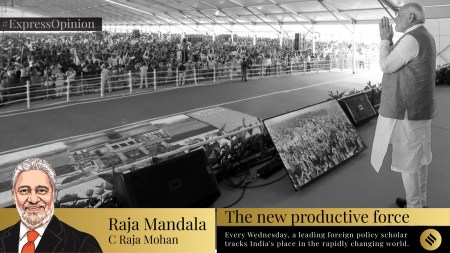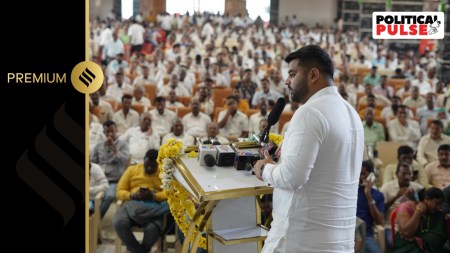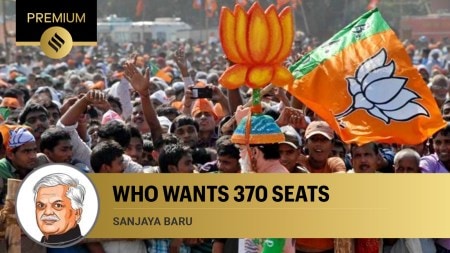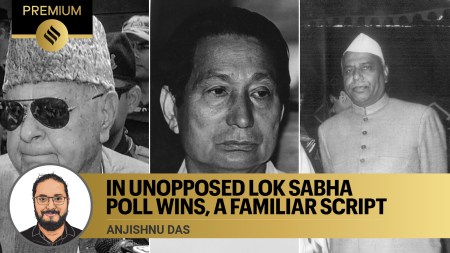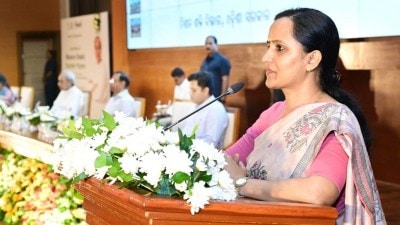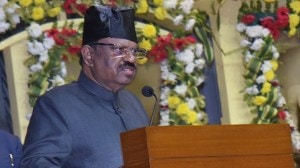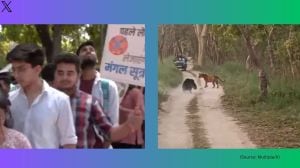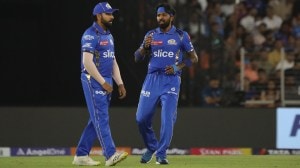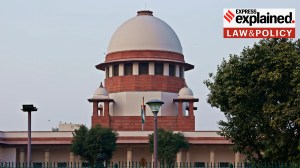- India
- International
Know Your City: From British military bands to rock and roll, the music of Cubbon Park through the ages
It has seen British marching bands give way to Indian music. And in the 1980s, it saw the freedom of a post-Emergency generation - finally expressed via the medium of rock and roll.
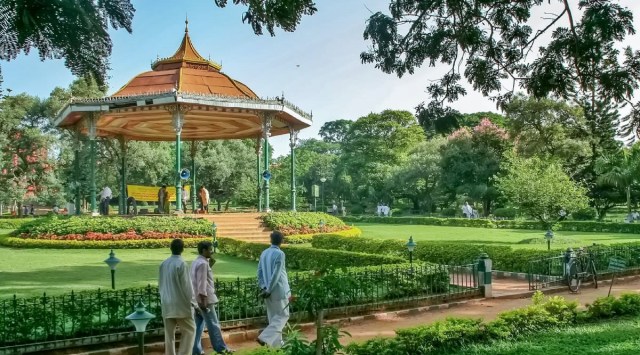 Band Stand at Cubbon Park.
(Express photos by Jithendra M)
Band Stand at Cubbon Park.
(Express photos by Jithendra M)Cubbon Park has seen the eras of the city come and go. It has watched rulers change – the British, the restored Wodeyars, and finally modern India. And through those years, the changing music of the city has found a home here as well. It has seen British marching bands give way to Indian music. And in the 1980s, it saw the freedom of a post-Emergency generation – finally expressed via the medium of rock and roll.
The story of music in Cubbon Park begins with the bandstand. Whilst the Cantonment area once hosted several bandstands even older than this one (the Bowring Institute once had such a bandstand on its premises) few have survived to the present day. Cubbon Park’s surviving bandstand, in sight of the Seshadri Iyer Memorial Hall, is just over a century old. It was inaugurated in 1918, with a band from the forces of Mysore State given the honour of the first performance. The bandstand would go on to become a regular venue for music played by military bands. Similar to the Glass House and bandstand of Lalbagh, the Cubbon Park bandstand was made of Scottish iron imported for the purpose – with the Victorian features that were still fashionable in buildings of the era. Any history of the bandstand always mentions the 1927 Silver Jubilee celebrations in honour of Nalwadi Krishnaraja Wodeyar. The band playing on this occasion was drawn from the Madras Sappers (today, the Madras Engineering Group.).
In later years though, in the freedom of the post-Emergency era, the early 80s would become home to a phenomenon which would never be seen again in the city. For several years on end from 1982, Cubbon Park was home to free weekend concerts, with the musicians of the city given free rein in a time less concerned with restrictions and complaints – the Cubbon Park Music Strip. The moving force behind this was a man who was not himself a musician, but instead was perhaps one of the city’s most dedicated music enthusiasts – Sunbeam Motha.
Bengaluru-based guitarist Konarak Reddy recalls, ” He had just come back after hitchhiking all around Europe……he started the music strips and invited musicians to play over there. It was a really interesting part of the city because every weekend we would play in these jams and people would come and watch amongst the trees….we even sold sandwiches on the side. Other than the food, everything was free – no one was charged money to listen to music…Max Muller Bhavan also supported it, and we used to keep all the instruments and amplifiers there.”
A friend of Reddy, Venkatachalam says, ” Sunbeam had spent some time in Germany and was exposed to the busking scene, where musicians would play in the street, so he had come up with the idea with some of his friends. He had done one or two sessions in Cubbon Park, which we had not attended yet. It was all about acoustic music at first, since there was no equipment. It was all spontaneous….people would play, and others would come to listen. It started in a rocky area, near the statue of King Edward near the General Post Office.”

He added, ” I was in Konarak’s house, and Sunbeam came over and tried to convince Konarak to come and play there. Sunbeam wanted to try and make it a people’s movement for music. Konarak told him that he was playing electric guitar at the time, and it could never work. I jumped in because I liked the idea and said – suppose we can give you sound, will you play. Sunbeam said that the problem was that there was no electricity available.”
Venkatachalam added, ” Konarak said that he would play if we could get electricity. I have a background in audio, and I knew about these amplifiers for hire in Shivaji Nagar, which ran off car batteries. They used to be used for political functions and lorry announcers. We got two of those, rented two batteries, and hauled Konarak’s speakers upto the rocks. For the first time, we had an impromptu electric music strip.” According to Venkatachalam, Sunbeam later managed to get the park authorities to allow performances in the bandstand itself. He added, ” Much later, this morphed into the Freedom Jam….and eventually the August 15 Freedom Jam and the movement caught on in its own way.”
The Music Strip eventually wound up in 1986 – according to author Roopa Pai’s book on Cubbon Park, after the police had received orders in this regard. According to Konarak Reddy, one of the things that set the strip apart was the musicians who came to play for the sake of music – as opposed to the commercial aspects that have since crept in.
He said, ” It was much more personal nowadays. These days musicians hardly meet…..There was no permission needed at the time, everything used to be very relaxed at the time. Bangalore was very local at the time. Everyone knew everyone else. All the venues which we loved to visit because of the growth of Bangalore have disappeared. They’re trying to recreate these quaint little places in malls – it has become very distant.”
As long as it existed, the music strip was a beacon for the live musicians of Bangalore, with foreign guests playing as well when they heard about the scene. Even figures such as writer Jeet Thayil were known to play there. While the live performances of Cubbon Park may not live like it did in the 80s – unrestricted and free, powered by car batteries and the love of music, they still live in the memories of those who were lucky enough to see that time.
May 03: Latest News
- 01
- 02
- 03
- 04
- 05


